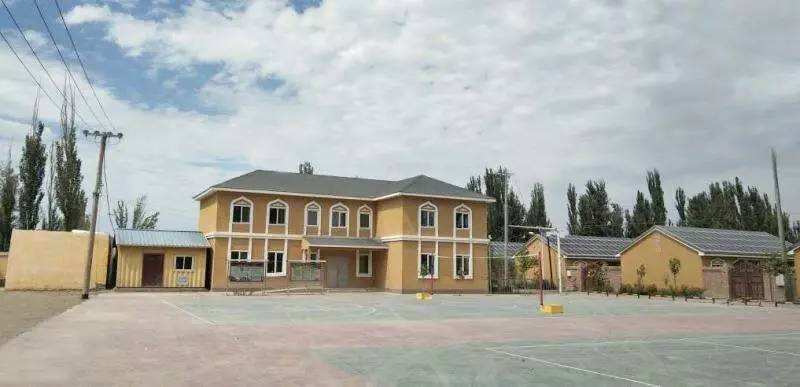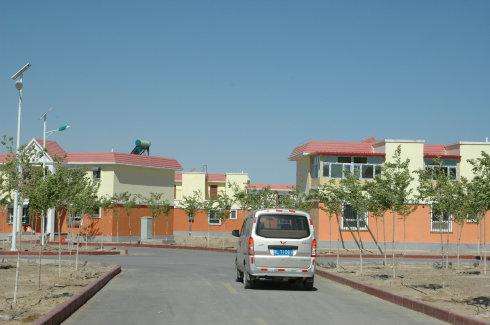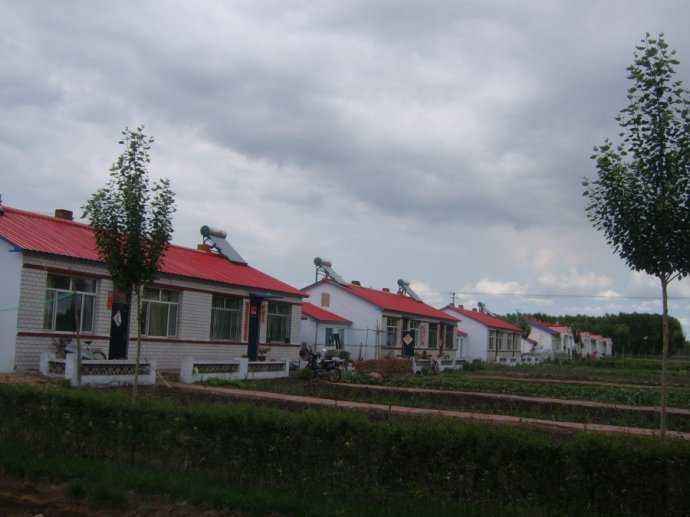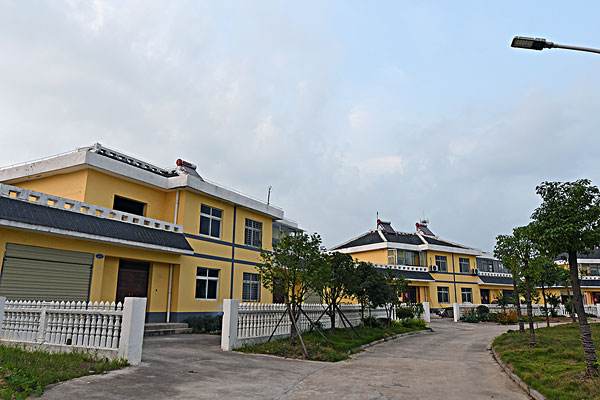Beautiful New Countryside
3 min readThere is a town called Yiganqi in Xinjiang the village construction there is really a feast to the eye, beyond your imagination before you see by your own eyes. There is a new village constituted by 536 Uighur dwellings, showing both the national features and a little “foreign flavor” by drawing the essence of Uygur architecture in southern Xinjiang and European architecture. According to the habit of Uygur farmers in southern Xinjiang, craftsmen were specially invited from Kashgar to elaborately decorate the outer walls, eaves, stand columns, gates, atriums, and windows of those houses. The entrance hall was designed quite wide to let the guests of group tour have a rest, and enjoy the ethnic food.

The houses are full of rural characters and unique feelings with small courtyards in front, and orchards in the back, and mulberry trees and apple trees on both sides of the road. It can be described as “the village in the orchard, and the orchard in the village. “Even the people of city dream to have such a single-family villa, let alone the farmers of working hard in the field.
Yiganqi town is located at the bank of the beautiful Duolang River of the outskirt of Aksu City. 314 National Road and the Southern Xinjiang Railway traverse the town, and with the fertile land, abundant natural resources, and convenient transportation, Yiganqi has developed the largest fruit and vegetable trading center in southern Xinjiang, known as the “window”of Aksu. Now it has gained many titles such as “China Red Fuji Apple Town”, “China’s Pollution-free Vegetables Village” Yiganqi town was not built in a single day. Before 2006, housings there suffered the security risks, and some even the crumbling clod houses, several continuous heavy rains may cause the wall to collapse, let alone the earthquake. In addition, the infrastructure was quite poor, most of the place was without running water, garbage gone with the wind, and sewage flew everywhere.

Red Fuji apple sculpture in the square of Yiganqi Town In early 2006, the local government put forward the dynamic integration principle of properly accommodating the relocated farmers and improving farmers’housing conditions, raising farmers’income, and building new socialist countryside, combining with the managing of Duolang River and the renovation of landscape. In order to achieve such a goal, a series of preferential policies were issued to reduce the cost of new houses by all manner of means, and designed the houses into different types and areas to make sure that each relocated farmer can live in a beautiful new house.
Through the increased investment in the infrastructure construction, the coverage rate of villages’network has reached over 85%, toilets transform rate has reached over 87%, the coverage rate of village-level asphalt road has reached 100%, and the coverage rate of standardized village-level positions, village-level clinics, and places of cultural activity has reached over 80%, the village appearance has been greatly changed The beautifully designed village committee building is not only the place for working and holding meetings of”village officers”, but also the place to hold weddings or funerals, or to dance the Meshrap. There is a hall in the building, which is the small folk museum for the exhibition of the past used working tools and household articles. People can trace the great changes which took place in the countryside of Aksu of half a century through these old articles.

There is also a small square in the village with the sculptures of red Fuji apple, Chinese cabbage, and cow, and so on, basically covering all the industries in the countryside of Aksu City, showing Aksu City the famous” of Chinese Red Fuji”and”National Pollution-free Green Organic Food Base”.
The No. 1 Central Document of 2006 required that all parts of the country should vigorously promote the construction of new socialist countryside, and clearly stated the principle of “developing the production, raising the living standard, raising the rural civilization, making better village appearance, and carrying out democratic management”.

Since then, the new countryside constructio has been in full swing, showing a harmonious developing and flourishing feature.”Democratic management”are more than just a slogan, in recent years, during the research in the southern and northern Xinjiang, I found every village I’ve been to has service information board, fairly transparent! Cadres property publicity has been achieved in the new rural countryside in Xinjiang.








